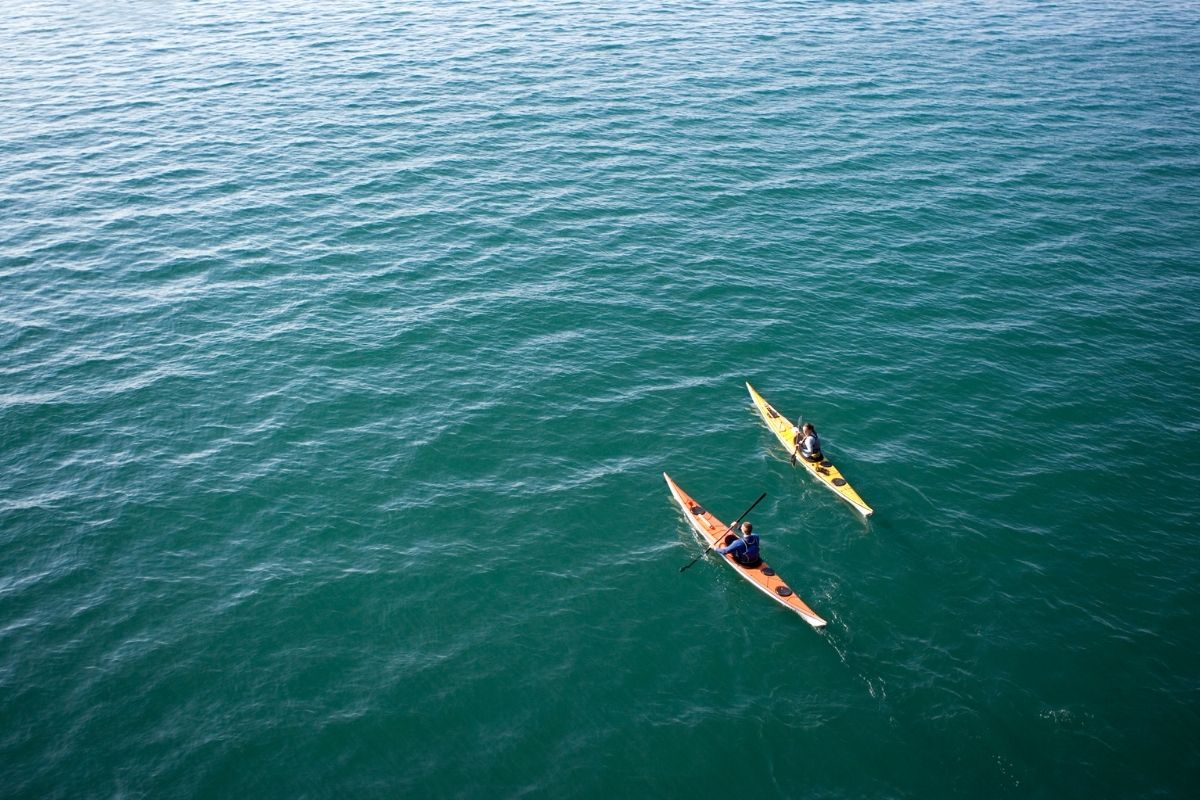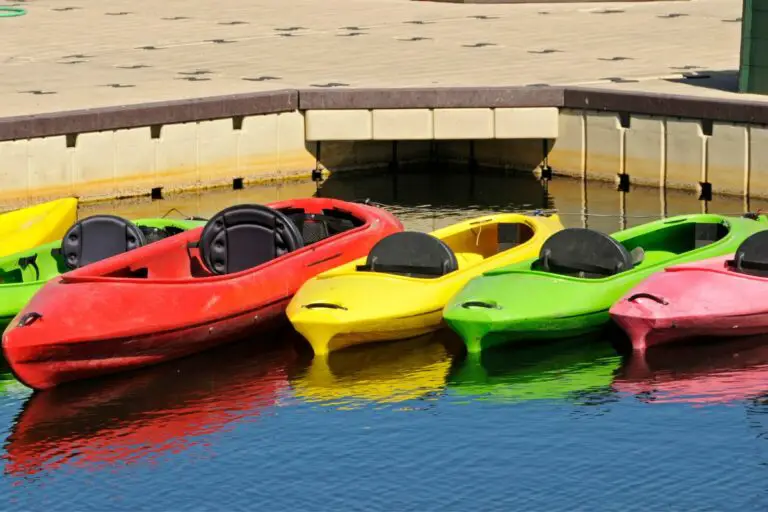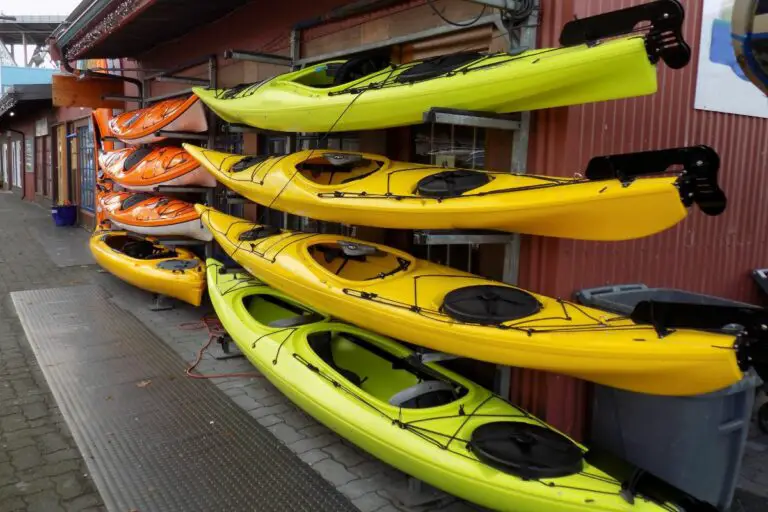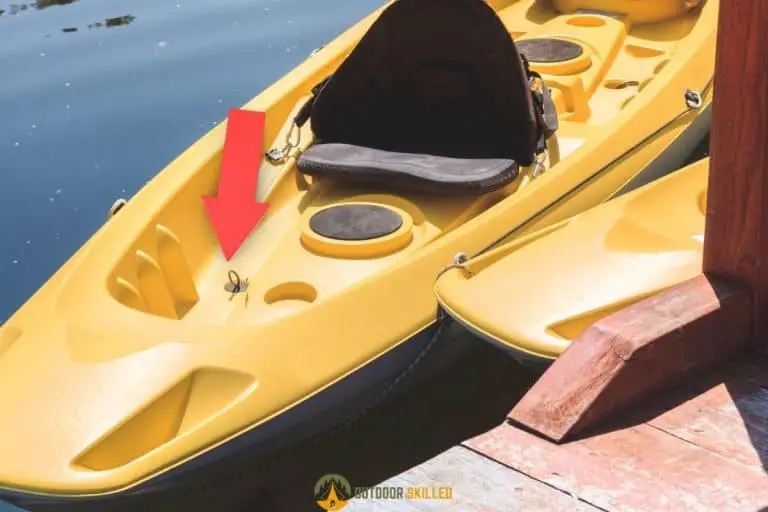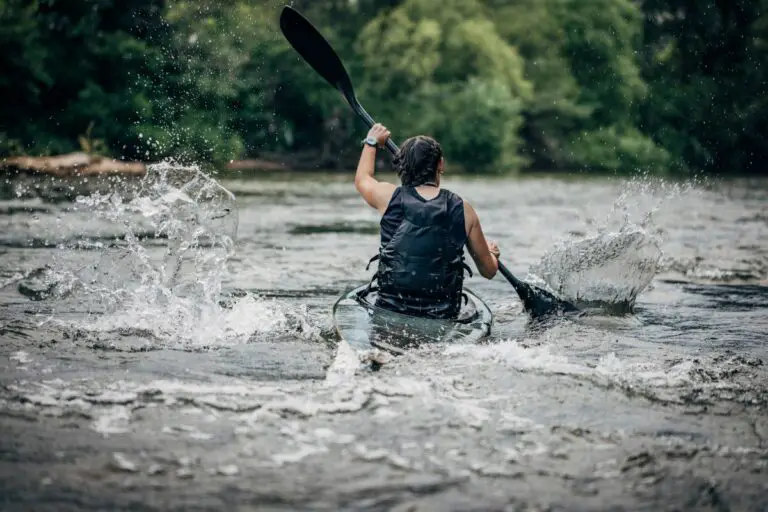How Far Out to Sea Can You Go in a Kayak? 8 Crucial Safety Tips
Sea kayaking is different from river kayaking and it can be slightly more dangerous.
If you’re heading out on a kayaking trip in the sea, it’s important to have an understanding of the speed of your kayak and how far out it can go in a day.
Knowing the exact distance your kayak can go at a certain time will help you avoid being out on the water when it gets dark so you can safely find your way back
So, how far out to sea can you go in a kayak? To calculate how far out to sea, you can go in a kayak at a certain time, you first need to know the maximum speed of your kayak. This can be calculated by multiplying the square root of the water length of your kayak by a factor of 4.5. It’s recommended not to go further than 300 meters from the shore when kayaking in the sea so you can safely get back.
Keep reading to learn how the speed of your kayak affects how far you can go out in the water and how to stay safe when kayaking in the sea.
Table of Contents
How Fast Can a Kayak Go?
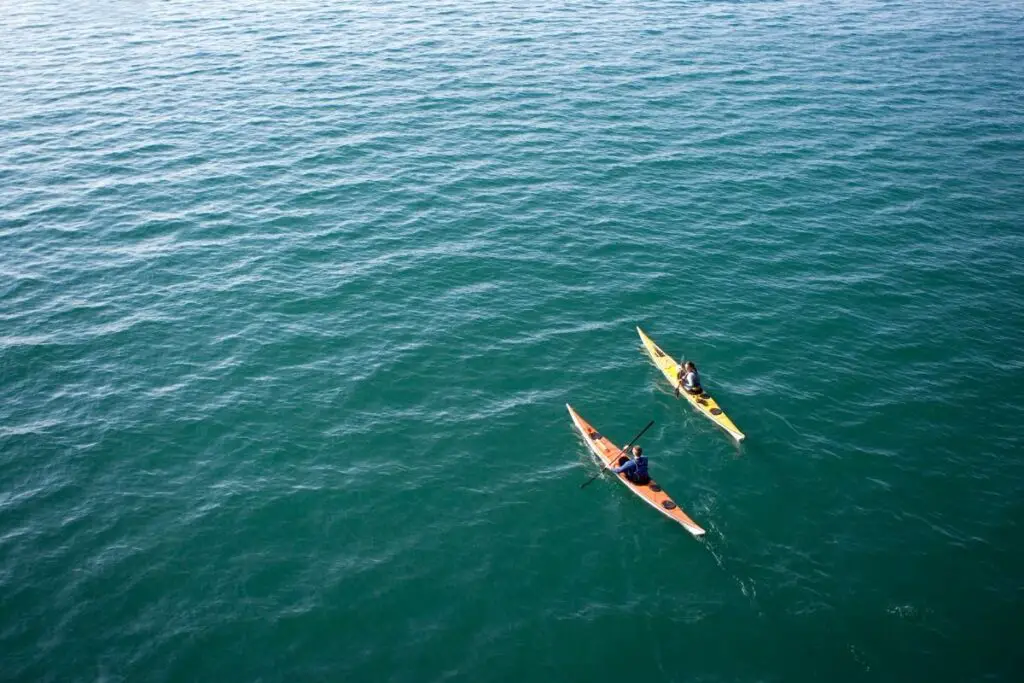
The speed of the kayak is also known as the hull speed and it’s the maximum speed that a kayak can theoretically achieve. It mainly depends on the length of the kayak.
It can be approximately calculated by multiplying the square root of the length of the kayak by a factor of 4.5
Knowing how fast your kayak can go at a certain time will help you determine how far out on the water you can go which will help you time your kayaking trip accordingly.
However, you still need to keep in mind that the speed of the kayak can be affected by several factors other than the kayak’s length such as the condition of your kayak, the weight you bring on board, your skills as a kayaker, and the weather. You can learn why longer kayaks are faster here.
Is Kayaking in the Sea Considered Dangerous?
Kayaking in the ocean can be considered dangerous if you don’t have enough experience.
That is because the sea can be unpredictable and there are several risks that come with heading too far away from the shore and into open water.
You might find it difficult to maintain a sense of direction and you could easily get lost. In a worst-case scenario, you might end up capsizing due to tidal waves and get trapped under your kayak and drown.
That’s why it’s best for beginners not to venture too far out, no more than 300 meters from the shore, without being accompanied by more experienced paddlers for safety.
How to Stay Safe When Kayaking Far Out in the Sea?

Although there are risks involved with kayaking in the sea, it’s easy to say safe by being smart and taking the proper precautions
Let’s take a look at the safety equipment you need to bring on your kayaking trip as well as some tips you need to follow to ensure you’ll remain safe out on the water.
Safety Gear You Need to Bring When Kayaking in the Sea
- Personal Flotation Device – This is the most important part of your safety gear and you need to make sure you’re always wearing it when out on the water. It’s recommended to purchase PFDs that are specifically designed for kayaking as they will be more comfortable and won’t obstruct your paddling.
- First Aid Kit – This is another must-have on any kayaking trip. Make sure it’s well-stocked for minor injuries or sunburns. You can also try learning basic first aid procedures such as treating cuts and performing CPR.
- Air Horn/Whistle/Flares – You need to bring a method that will attract the attention of other kayakers or rescuers in case of an emergency. You can attach it to your PFD. Keep in mind that one blast is for attention while three blasts mean “help.” If you can’t remember how many blasts, just keep going until a rescuer arrives.
- Communication Device – You can bring your cellphone in a waterproof case if there’s good cell coverage. However, if you’re heading too far out, it might be better to invest in a VHF radio.
- Rope – Having rope is essential in case you need to tow your kayak back to shore. Make sure to store it properly to keep it dry.
- Headlamp or Flashlight – It’s important to have a good source of light in case it gets dark while you’re still out on the water. Also, make sure to bring back up batteries.
You also, of course, need to have a kayak that is capable of going to the ocean easily, and you can learn about the best ocean kayaks for the money here.
Safety Tips to Follow When Kayaking in the Sea
- Always check the weather report before going on your trip to be prepared for any sudden changes in the wind or current conditions.
- Follow the local boating rules of the area you are kayaking and if you’re going on a trip to a new area, make sure to do your research about the water conditions and regulations beforehand.
- Make sure you’re in good physical condition before heading out on the water and try to stay hydrated.
- Make sure your kayak is also in a good condition. Double-check your gear and check the kayak for any signs of damage
- Practice different paddling strokes. The main four you need to learn are the forward stroke, reverse stroke, sweep stroke, and draw stroke.
- Practice re-entering your kayak from the water in case your kayak capsizes. If you still haven’t mastered re-entering your kayak from the water, then it is best to stay close to shore so you can swim back if you need to.
- Make sure to inform someone of where you are kayaking and how long you’re expected to be out on the water.
- Avoid going kayaking alone or heading too far away from the shore if you do not have enough experience.
Related Questions
Is It Hard to Paddle Upstream in a kayak?
It is not hard to paddle upstream in a kayak. All you need to do is avoid the fast-moving middle sections of the current and stay closer to the edge. You can move at about 3.5 miles per hour on average when paddling upstream and it’s usually recommended to avoid kayaking in currents that go over this speed.
Do SUPs Go Faster Than Kayaks?
SUPs do not go faster than kayaking when traveling in a straight line. That is because kayaks are normally built shorter with a more pointed tip than SUPs which allows them to move faster in the water. However, SUPs come in different sizes, so some of them might be just as fast as a standard kayak.
Helpful Resources
Kayak your way to Freedom
- On a budget? Check out the best fishing kayaks under $500 here and the best Fishing Kayaks under $1,000 here. Or Check the best Cheap Kayaks here.
- Going fishing? Here are the best Ocean fishing kayaks, and here are the best River Fishing Kayaks.
- You can also find the best Fly Fishing Kayaks here and the best Bass Fishing Boats here.
- A bit experienced? Check out the best modular kayaks here and the best tandem fishing kayaks here.
- Looking for something special? Check out my favorite Ducky kayaks here.
- Navigate your way with these awesome and beginner-friendly Kayak compasses.
- Going Hunting? These Duck hunting kayaks will give you an unfair advantage!
- Have a need for speed? These motorized kayaks will get you moving.
- Protect yourself from the sun with these Kayak shades, and make your kayak more comfortable with these Kayak seats.
- Keep your feet dry and warm with these superb Kayaking shoes.
- Going Kayaking in cold water? Stay warm with these Kayaking gloves.
- Paddle Less, Fish More with the Best Kayak Motors
- Looking to get a trolling motor on your kayak? Check out the best kayak trolling motor mounts here.
If you like this article, please share it or pin it, you can find the share buttons below. We will really appreciate it ❤️

